NOW CONTAINS AN ANTIFUNGAL TO PREVENT MOLD, MOSS & ALGAE ON SEALER FILM
Surebond SB-1300 Joint Stabilizing Sealer is a water-based, single component, epoxy modified, enhancing sealer and joint sand stabilizer. The product can be used both inside and outside, on old and new pavements, sealing paving stones and stabilizing joint sand at the same time. It is the only sealer that can be applied immediately after paver installation, as it is breathable and will not trap the naturally occurring efflorescence. This breathability also decreases freeze-thaw damage and improves surface durability and ease of maintenance. SB-1300 Joint Stabilizing Sealer is solvent free and exceeds all VOC and EPA standards. The product is non-hazardous and has the consistency of water. It is milky white when applied and dries crystal clear, creating a finish that ranges from a matte finish to a satin sheen, depending on the surface. Cured sealer is freeze resistant to -60°F (-51°C) and is stable up to a temperature of 180°F (82°C).
Preparation:
The pavement surface should be clean and free from oil, dust and any loose material. If necessary, use SB-442 General Stain Remover to clean pavers (refer to label and data sheet for guidelines). The paver joints should be completely filled with dry, correctly graded jointing sand with the top level not exceeding the bottom of the chamfer or 1/8” below the surface on non-beveled or tumbled paver surface. A leaf blower is the recommended method to remove dust and fine sand particles from the surface and achieve the optimum joint sand height. Remove all visible efflorescence prior to sealer application; use SB-488 Efflorescence and Rust Remover if necessary (refer to label and data sheet for guidelines). Be sure surface is dry prior to application.
Application Information:
SB-1300 Joint Stabilizing Sealer should be flood coated to the pavement surface using a siphon pump, bulk sprayer or a handheld garden sprayer. Use coverage guidelines to determine the correct amount of material for the project. Flood joints to ensure proper sand penetration and stabilization and use a soft foam squeegee to direct excess material into the joints and to remove all excess material from the surface. Material coverage will depend on surface porosity, joint size and pavement usage. Care should be taken that no excess material is pooled on the surface. Clean all application equipment with water and do not allow material to dry in containers as removal becomes more difficult.
Benefits:
- Fast Drying
- Breathable
- Sealer and Joint Sand Stabilizer
- Environmentaly Friendly
- Reduces Weeds
Coverage Per Gallon:
100-150 square feet depending on substrate porosity.




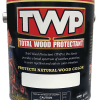


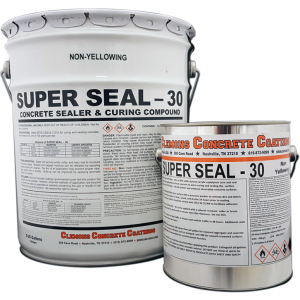

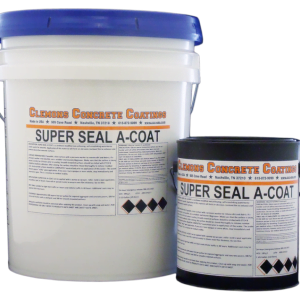
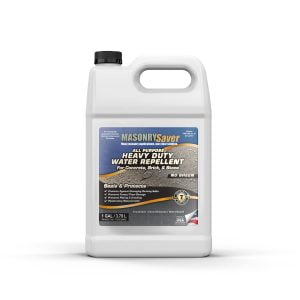
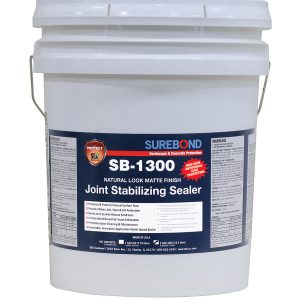
Hello,
Can you recommend the best sealer/joint stabilizer for patio interlock around a chlorine pool. Im looking for something that is long lasting, and suitable for northern freeze/thaw climates. Im also looking for something that will help prevent the polymeric sand from breaking down reduce the need to rejoint as infrequently as possible. As for finish Id prefer matte, or semi gloss.
Thanks in advance.
Look at the SB-8700 for this: https://www.opwdecks.com/sb-8700-wet-look.htm
how much area does 1 gallon cover?
100-150 square feet depending on substrate porosity.
Which Surebond Joint Stabilizer Sealer dries to a wet look?
https://www.opwdecks.com/sb-8700-wet-look.htm
Does sb-1300 need to be applied when there is no rain in the next 24 hours?
It should be able to take a rain 4-8 hours later.
Many thanks. One more question. A couple of our bricks look like this after sealing. What is the cause? Will adding another coat of sealer eliminate the white?
That looks like efflorescence under the sealer. You would have to remove it with a cleaner.
After exchanging texts on this forum with you, I purchased 5 gallons of SB-1300 to seal our brick patio, driveway, and walkways. I ran out of the sealer and have reordered. What I’ve covered looks good, and the places with thicker application look better than the places where we didn’t soak as much. I think I need to recoat the lighter places, as the sand is not sealed.
So now I’ve got to finish the job. The Product Info sheet says:
“A minimum temperature of 45°F (7°C) must be maintained for a period of 24 hours prior to application.”
Is this temp of the product or our clay brick surface?
Here in Chicago by the lake we are close to the end of the days with lows above 45. I expect the sealer today or tomorrow. Tonite the low will probably be mid to upper 30s. Can I apply the product tomorrow afternoon?
Also, our squeegee broke while spreading the sealer over the bricks and we used a soft, carwashing brush. Is that okay? It seemed to sweep more product off of the bricks.
Temp of the surface and the product. Spray on the sealer, better than a squeegee. car wash brush pulls sand out of the joints.
Thanks for your spee-dee reply. So if the temp of the air gets to high 30s at 5AM before I apply 11 hours later at 4PM, I should not do it? Product is inside, room temp.
Also, I am confused by this: “Spray on the sealer, better than a squeegee” Are you saying spraying on is better than applying w a squeegee? I did spray it on; we used the squeegee to move excess into sand as per instructions. Then the squeegee broke and we used the brush. I agree that the brush can pull sand out. I think it also thinned the sealer more. Tx.
Spray on with a pump sprayer is much easier and just saturate the sand while doing it. Correct on the surface temp.
I have a few questions: 1. If I need to fix a paver, will the sand come out easily or does the sealant make it more like concrete? 2. Since I don’t have a leaf blower or a wet vac, can I just sweep off the brick pavers to clean them? Would spraying them with water and sweeping clean then well enough?
1. Most paver sealers will harden the sand.
2. No, you should pressure wash for cleaning.
Hi. I primarily need joint stabilization. Is this the best sealer you have for that purpose? Is there anything else that would seal the joints better?
This is the correct product for stabilizing the sand between the pavers.
Yes on the coverage. As for an authorized dealer, of course we are. Feel free to call them if you want to confirm.
I am considering the SB-1300 to seal my paver patio. I have the Belgard Lafitt, 2-3/8″ pavers, installed & it has never been sealed.
I assume I would be looking at the 80-120SF coverage per gallon?
Also, can you tell me if you are a certified SEK, SureBond retailer? (Sorry, but I am unfamiliar with your company. How can I verify that the product I order will in fact be the brand ordered?)
Thank you in advance for your assistance.
I believe you apply the SB-6000 first then the 1300 on top. I would call Surebond to confirm.
Hi, I’d like to know if its possible to apply a coat of SB-600 to brick pavers to achieve a wet look, then put the jointing sand in, and apply SB-1300? Will I keep the ‘wet look’? Will I also get joint stablization? Are the products compatible?
According to the product data sheet at the top, it does not say there would be an issue with hot tires and driveways. We have sold many 1000’2 of gallons and never had any negative feedback about this.
Can this be used on hot tire areas/drive way?
SB-1300 does not change the appearance of the pavers much or at all when it dries. Not slippery and is transparent.
Is this SB 1300 dry to a satin finish? Is it suitable for a pool deck? Slippery when wet? Transparent?
Only need to use the efflorescence cleaner if you have efflorescence on the pavers. It looks like white powder.
The SB-1300 has very little or no change in appearance. The porous the brick is the less chance of any change in appearance. In my opinion it is more matte or no change.
I’m interested in putting the SB-1300 sealer on my new pavers. Should I get the efflorescence remover and apply first? How long should I wait to apply the sealer after using the efflorescence remover? Also, it says that depending on the surface the SB-1300 can enhance the finish from a matte to a satin sheen. My product is the Calstone Quarry Stone paver. Do you know if the finish will be closer to a matte or a satin?
Thanks, Larry